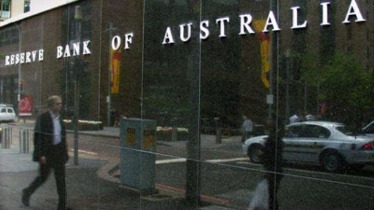What Does Doji Mean
Contents

A popular Doji candlestick trading strategy involves looking for Dojis to appear near levels of support or resistance. The below chart highlights the Dragonfly Doji appearing near trendline support. In this scenario, the Doji doesn’t appear at the top of the uptrend as alluded to previously but traders can still trade based on what the candlestick reveals about the market. The GBP/USD chart below shows the Doji star appearing at the bottom of an existing downtrend.
They rely on statistical trends, such as past performance, price history, and trading volume to make their trading decisions. They often employ charts and other tools to identify opportunities in the market. Yes, a Doji candle pattern can indicate a potential trend reversal.
The https://forex-trend.net/ is composed of a long lower shadow and an open, high, and close price that equal each other. Although the gravestone Doji candlestick is uncommon, you must be cautious when identifying one when you see one. The market’s lengthy upward shadow shows that it was looking for and finding the upper resistance level. The bulls attempted to drive the price higher, but a big selling binge ultimately prevailed, completely rejecting the upward trend. Unlike the Doji star, which denotes market indecision, the gravestone candlestick signals a price reversal.

For example, if trading intraday charts, your strategy might work better in the first half of the day, than the second. Use ADX, which is one of our favorite trading indicators to measure volatility. Conversely, a long-legged Doji after a bearish move is considered a bullish reversal pattern.
A gravestone doji is a bearish reversal candlestick pattern formed when the open, low, and closing prices are all near each other with a long upper shadow. A Doji is a special pattern in a candlestick chart, which is a popular trading chart. It is distinguished by its short length, which indicates a limited trading range. The short length indicates that the opening and closing prices of the traded financial asset are equal or have little variances. A plus sign, a cross, or an inverted cross are all examples of Doji candlesticks.
Other types of candlestick patterns to be aware of include the Hammer, the Inverted Hammer, the Morning Star, the Evening Star, and the Three Line Break. It means that the price of the financial asset closes in the middle of the day’s high and low. Following the trend prior to the Doji, a change in direction can be expected. Although a doji can indicate that a reversal of price direction is in progress, it can also be a continuation pattern where prices hover at their current value.
This happens because long-legged dojis are sometimes grouped together or as part of a larger consolidation. These consolidations could lead to a reversal of the previous trend, or a continuation, depending on how the price breaks out of the consolidation. For all Doji candles, the open and close prices are practically equal. Now, this means that when the market is in an uptrend, it’s going to be above the upper band, and below the lower band when it’s in a downtrend.
Unlike the gravestone doji, the dragonfly doji pattern has a long lower shadow. Depending on where it forms, it could indicate a change in the price direction or a continuation in the present direction. When it occurs within a price swing, price continuation is more likely. A doji (dо̄ji) is a name for a trading session in which a security has open and close levels that are virtually equal, as represented by a candle shape on a chart.
Thus, the bearish advance downward was entirely rejected by the bulls. The internet is littered with trading advice that doesn’t work, and to separate the wheat from the chaff, you will have to carry out your own analysis. Analyzing the time element could lead to some quite interesting insights. Just to name a few, we have some strategies that actually work by having short entries only happen on odd dates, and long on even dates.
What Does Doji Candlestick Mean? Is it bullish or bearish? (Meaning, definition and Trading Strategy Backtest)
The Doji pattern suggests that neither buyers or sellers are in control and that the trend could possibly reverse. At this point it is crucial to note that traders should look for supporting signals that the trend may reverse before executing a trade. The chart below makes use of the stochastic indicator, which shows that the market is currently in overbought territory – adding to the bullish bias.
There are many ways to trade the various Doji candlestick patterns. However, traders should always look for signals that complement what the Doji candlestick is suggesting in order to execute higher probability trades. Additionally, it is essential to implement sound risk management when trading the Doji in order to minimise losses if the trade does not work out.
Doji Formations: Learn How to Interpret Them to Help Trading Strategies
Other indicators should be used in conjunction with the Dragonfly Doji pattern to determine potential buy signals. Although their origin dates back to the 17th century, Japanese candles are still relevant today. The first version of Japanese candles was adapted for technical analysis by American Charles Dow in 1900. One great way of gauging the significance of a pattern is to watch the volume. If the volume is high, it means that many contracts or shares were traded when the pattern formed, which, in theory, makes a reversal pattern more accurate.
The simplest way to trade a triangle is to place an entry order just beyond the level of resistance or support . In a hanging man, sellers took over during the session to postpone a rally. Buyers then pushed the price back up but weren’t able to send it much past the open. Which means buying sentiment may no longer be strong enough to sustain the uptrend.
84% of retail investor accounts lose money when trading CFDs with this provider. Remember, it is possible that the market was undecided for a brief period and then continued to advance in the direction of the trend. Therefore, it is crucial to conduct thorough analysis before exiting a position. And there won’t be any meaningful patterns for you to trade in this market condition. In a strong trend or healthy trend, a doji candle is likely to “bounce off” the Moving Average.
What Is the Difference Between a Doji and a Spinning Top?
However, in the world of https://en.forexbrokerslist.site/, no single indicator is enough to trade. It has greater predictive power than the high wave candle, although it is similar in its formation and effects. The long-legged doji is a candlestick pattern that tells us that the market has reached a point where there is an equilibrium between buying and selling pressure. As such, occurring after a trend, it’s an indication that the market no longer possesses the power needed to continue in the same direction. The Dragonfly Doji can appear at either the top of an uptrend or the bottom of a downtrend and signals the potential for a change in direction.
Leveraged trading in foreign currency or off-exchange products on margin carries significant risk and may not be suitable for all investors. We advise you to carefully consider whether trading is appropriate for you based on your personal circumstances. We recommend that you seek independent advice and ensure you fully understand the risks involved before trading. If you are just starting out on your trading journey it is essential to understand the basics of forex trading in our New to Forex guide.
Because the market is telling you it has rejected higher prices and it could reverse lower. You know Resistance is an area where possible selling pressure could come in. Thus, you’ll look to go long when the price does a pullback towards a key Moving Average and forms a Dragonfly Doji. Because the market is telling you it has rejected lower prices and it could reverse higher.
- Unlike the gravestone doji, the dragonfly doji pattern has a long lower shadow.
- Although rare, a doji candlestick generally signals a trend reversal indication for analysts, although it can also signal indecision about future prices.
- The market advances, and since it’s in a bullish trend, the prevailing market sentiment is bullish.
The Dragonfly Doji is one of the most distinctive and easily recognizable candlestick chart patterns. As its name suggests, this pattern looks like a dragonfly, with a small body and wings stretched out on either side. The Dragonfly Doji forms when open and close prices are approximately equal, which is considered a bullish signal. The long upper shadow indicates there was significant buying pressure during the day, but bears were able to push prices lower before the close.
The descending triangle is a chart pattern used in technical analysis. The pattern usually forms at the end of a downtrend but can also occur as a consolidation in an uptrend. The gravestone doji can be used to suggest a stop loss placement and eyeball a profit-taking plan on a downtrend, but these are less precise methods than other technical indicators provide. Although reliability increases with volume and a confirming candle, the gravestone doji is best accompanied by other technical tools to guide trading. Of course, there are different types of Doji pattern; let’s take a look at them.
As ever, careful trading and strong risk management are also key. What this means in practice is that they’ll wait for a few periods to check that the market is behaving in the way they predicted. The value of shares and ETFs bought through a share dealing account can fall as well as rise, which could mean getting back less than you originally put in. Get daily alerts on price changes of the top 10 cryptocurrencies. Traders can wait until the market moves higher or lower, immediately after the Double Doji. In the GBP/ZAR chart below, the entry point can be below the low of the two Dojis with a stop placed above the highs of the two Dojis.
The https://topforexnews.org/ should be roughly equal in length on both sides, and the body should be very small. Some of the Doji patterns represent complete indecision and may not tell much about future price movements, but others may offer significant insight into the future price movement. Let’s take a look at the significance of the various Doji patterns.
What Is a Dragonfly Doji Candlestick Pattern?
The pattern aids traders in better visualizing the resistance level, which may be tested again in the near future, particularly if the market attempts another upward move. The hammer Doji candle is fashioned like a hammer and appears following a price fall. When the price opens, lowers, and then closes near the opening price, a hammer Doji candlestick is formed. The pattern indicates that buyers are rushing in at the bottom of the market. While some traders may act on the no-candlestick pattern, others want to see what price does after the long-legged Doji. The pattern can be found on any timeframe but is more important on longer-term charts, as more participants contribute to its formation.

Leave your comment